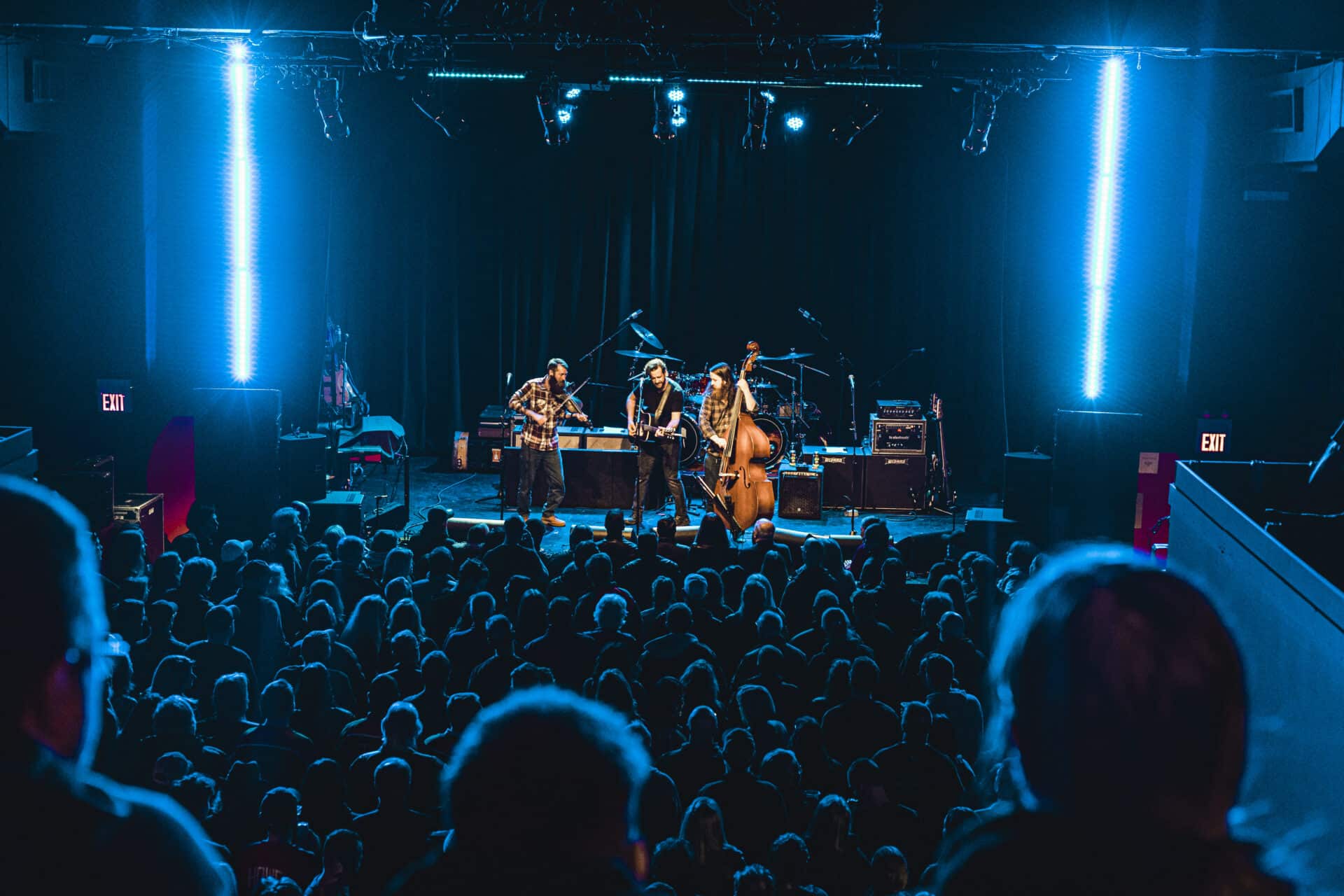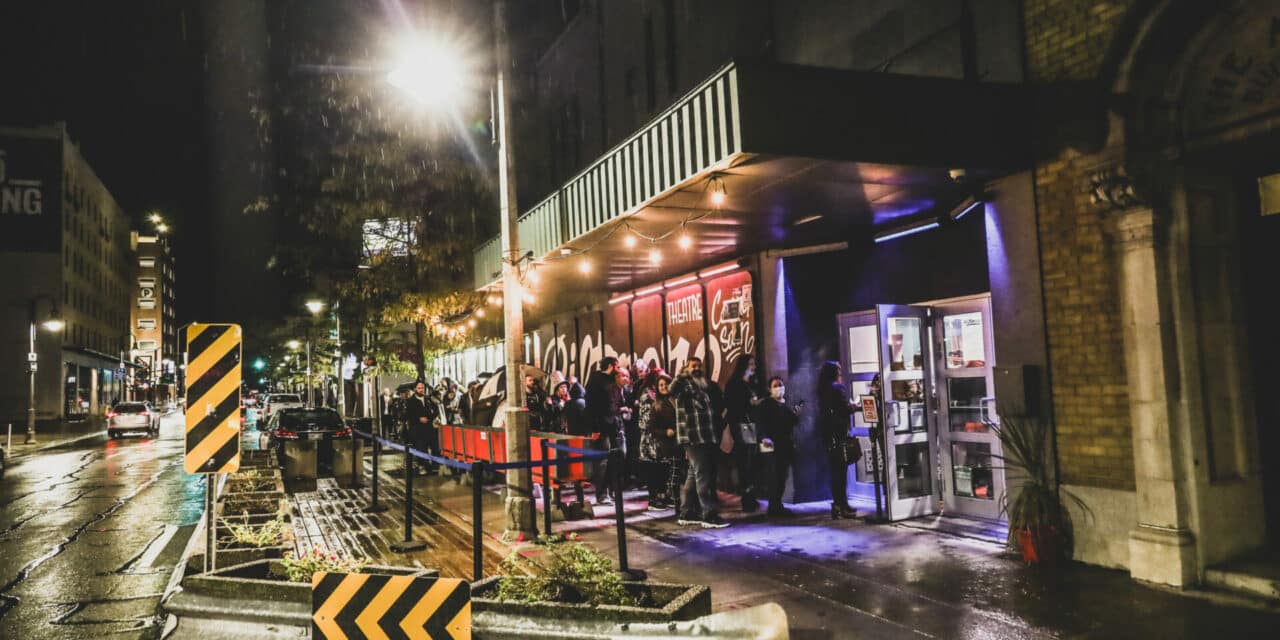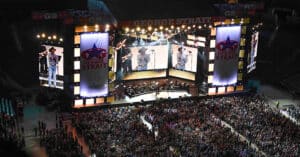BUILT MORE: Purchased during COVID, the Biltmore Theatre in Oshawa, Ontario, has seen recent cosmetic and technical upgrades, looking to bring in more touring artists. (Courtesy Venue)
Less than an hour’s drive from Toronto in Oshawa, Ontario, is the 81-year-old Biltmore Theatre, an original Art Deco movie theatre turned live entertainment venue that offers hotdogs and popcorn to its 536-capacity crowd (260-seated), while they watch such established Canadian names as Chantal Kreviazuk, Sloan, Big Wreck, Carole Pope, Kim Mitchell and the Trews.
The venue also hosts film series, including Durham Region International Film Festival (DRIFF) and Reel World Institute, but live music is its bread and butter, booking about 20 shows a month, mainly Canadian.
Scheduled in the coming months are shows by Dan Mangan, Econoline Crush, Hayden, Dizzy and Corb Lund. The Biltmore’s general Jacob Hamayda just announced that it has joined the trend of taking zero commission on merch, also known as a 100% venue, as artists publicly have gone public informing fans that merchandise sales are not always going to the artist.
Designed by Webb, Blythe and Sproule, the 1940s Biltmore was commissioned by Toronto’s Okum Brothers, who created the thriving Biltmore Hats brand (still going strong, but now American owned). They started a small chain of B movie cinemas called Biltmore Theatre, which dwindled.
Cinema company Odeon then took it over but it closed in 1989. The space next became a series of nightclubs or live music venues, including The Big Sexy, Status Lounge, Marquee Nightclub, and, most recently, The Music Hall, which was forced to close during COVID.
The building was purchased in September 2020 by local resident Julius Kedvessy and reopened under its original name and Art Deco restorations. He also wanted to bring film back to the site. Kedvessy died suddenly a year later, but his daughter Diana Cerovich is chief operating officer.
The Biltmore’s general manager, Jacob Hamayda, a one-time tour manager and front of house operator for such acts as Crown Lands, Cuff The Duke, Evening Hymns and I Mother Earth, tells VenuesNow, “We average 8-10 events a month. We go through a pretty big summer slowdown, where we see very few events and our busy months, September through December, usually see 12 to 14 events monthly. We are averaging just over 100 event days a year.”
VenuesNow: The Biltmore recently became a 0% merchandise rate venue. What prompted that decision?

Canadian band The Doozies played the Biltmore Theatre in July. (Courtesy Venue)
Jacob Hamayda: We’ve always considered ourselves a low merch rate policy venue. We never really charged on anything that was in minimal sales, when artists weren’t walking away with enough to fill their gas tank. We sure weren’t taking a cut. So, mostly, we only had that in place for our larger shows when dealing with artists like David Wilcox and Kim Mitchell that were coming through. I’ve always been pro artist side. For me, it’s always about the artists when we present shows. They’re the ones bringing in the clientele for us on those days. They’re really the ones selling tickets. I came from a tour management background, so I always favored artists and wanted that relationship to build long-term. We always felt that was all great and grand until the end of the night, when there was this little weird thing that we did, and asked them for some of their money, which was already a difficult process and not always the most lucrative market for artists. And then we looked at how much we pulled from that each year and how it affected artists. And, at the end of the day, we decided we don’t want to lose the revenue stream, but we felt that would be a much more appropriate action and the money would be better spent with the artists. And, for us, the hope is definitely that that gets reflected with the agents and purchasing price in the long run. We’ve seen a few venues make that switch already. We know artists are asking for it more and more.
The Featured Artists Coalition out of the UK started the campaign [in January, 2022] and it came over here that November [in the U.S. via Union of Musicians and Allied Workers and in Canada via rapper Cadence Weapon].
There were a couple articles covering it. For us, we want to be a leader in this industry rather than a follower. We’re definitely not the first to do it. But we want to be on board and promoting it and making sure the general public understands where that practice comes from.
The Biltmore was purchased during COVID. It’s over 80 years old. What were the renovations you did?
With updating, the front doors, foyer, box office and hallway on first floor were redone and our second floor mezzanine lounge, which is our VIP reception area, was redone in 1940-50s Art Deco style. We continue to update lighting and PA and try to make it artist friendly and unique. I’ve just found a lot of the venues we go to now are really just black boxes, open spaces, for artists to come in. We really wanted to have some character and offer a space that people can enjoy coming into, as well as to see a band.
What is your booking policy?
So we book mostly through agents, but we also look for a lot of community events and offer our facility as a rental facility. We program about 30-50% of our own events, but then we do rely on those other presenters, some other promoters, and a lot of community partnerships to come in and, also, help by presenting art, so we can cover all the cultural bases in all the cultural segments. I handle a lot of the booking. I know where my expertise lies and I rely on the community as a whole to build a full year’s programming.
Oshawa is about 40 miles from downtown Toronto. How do you pull people from the surrounding areas to come see the acts that you book?
Twofold. One is we do really work with all partners available to us. We approach all events with a pretty open eye. We’re a 536-cap venue. We’re not necessarily trying to fill it every day, but what we want is to have that varied art, so that we gain that name and brand recognition and people recognize our space as a destination for the arts, rather than just a concert venue.
So we work a lot with our local tourism departments, our own tourism sectors here, Durham tourism and Oshawa tourism. But we also work with some of those smaller providers, some dance recital groups, some of the music schools, and anybody that approaches us to present something. We try to treat them as a partner and look at everything as a co-promotion and support them from the get-go in producing a quality event that lives up to both our standards and the patron’s standards.
You have established Canadian acts like Hayden, Dan Mangan, Chantal Kreviazuk, who draw across the country. What are your major obstacles with getting artists of that caliber?
I would say our major obstacle is we’re still at B market, operating an hour outside of one of Canada’s busiest A markets [Toronto]. So, for us, it’s finding a lot of those artists that have either played the A market a year prior and are now into that B market run or we’re looking to pull a lot of artists out of the city and say, ‘You can get an event with a similar draw in a B market that’s adjacent to an A market for a third of the price of the venues in there.’ So, we end up being a facility where artists can walk away with a greater walkout than they might playing that A market show in Toronto.
What we’ve found is we often run into tours where we’re getting the B market tour, so usually for us they’re playing like Oshawa, Kingston, maybe Montreal. Usually, that Toronto show is either on the secondary tour or the primary tour. We will be the fall tour and they would be the spring tour. But, usually, we do have to and try to avoid any competition with the Toronto events.
What about attracting international acts?
We hope articles like yours go a long way to opening the U.S. market to people like us because we found attracting the U.S. market has been one of the hardest things because we all know touring in Canada is not always the most glamorous place with destinations being six to eight hours apart from one another. So we’re definitely trying to become more internationally relevant and find access and avenues into additional artists that might not be on our Canadian touring market.
You have the capability to livestream?
Yes. As of as of COVID and our opening, we decided to do at least a three-camera recording system, which we offer for use if artists do want a live stream or record. And, when appropriate, we still do record sets for the artist’s future use if they choose to or for our archival purposes.







